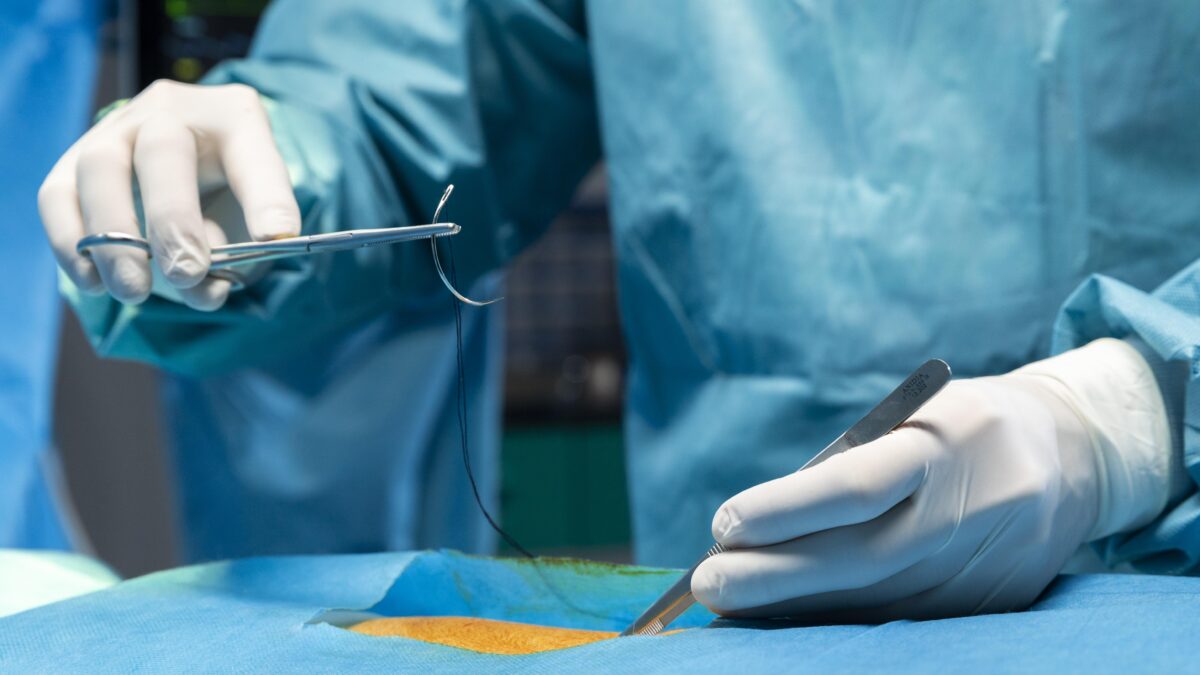- Immediate contact :
- +1-323-988-5889
- info@sonosif.com

Ultrasound-Guided Foreign Body Retrieval
February 15, 2022
Colectomy in Cats and Dogs
February 16, 2022Exploratory laparotomy is a procedure that opens up the abdomen (abdomen). This surgery is performed to determine the cause of problems (such as abdominal pain or bleeding) that testing has not been able to identify. It is also used when an abdominal trauma necessitates immediate medical attention. One large cut is used in this surgery (incision). The provider can then examine and inspect the organs within the abdomen. If the source of the problem is discovered during the procedure, treatment is frequently performed concurrently.
A common reason for exploratory laparotomy is abdominal trauma caused by a blunt force. Motor vehicle accidents are the leading cause of blunt abdominal trauma. Other uncommon causes include falls from great heights, bicycle injuries, sports injuries, and industrial accidents.
Internal organ damage can occur as a result of such accidents, resulting in internal bleeding, contusions, or injuries to the bowel, spleen, liver, and intestines. Extra-abdominal injuries, such as extremity injuries, can also present in patients.
Because the presentation is not always straightforward, making a diagnosis can be difficult and time-consuming. The patient may present with rectum bleeding, unstable vital signs, and peritonitis. The physical exam may reveal lap belt marks, ecchymosis, abdominal distention, absent bowel sounds, and palpable tenderness. If you have peritonitis, you may have abdominal rigidity, guarding, and rebound tenderness.
To avoid missing an injury, the mechanism of injury, motor vehicle speed, associated deaths at the scene, and use of alcohol or other substances of abuse must all be considered.
Under these conditions, triage for exploratory laparotomy is as follows:
The diagnosis of intra-abdominal injury following blunt trauma is primarily determined by the patient’s hemodynamic status. If the patient’s hemodynamic status is stable, a CT scan is the best way to look for solid organ injury in the abdomen and pelvis. An ultrasound (Extended Focused Assessment with Sonography for Trauma (EFAST)) is performed on unstable patients.
The medical literature and clinical community both support the efficacy of focused assessment sonography as a quick practical screening tool for exploratory laparotomy surgery triage at emergency departments.
For this purpose, we strongly recommend the Convex and Linear Color Doppler wireless Double Head Ultrasound Scanner CLCD.
For this purpose, we strongly recommend the Convex and Linear Color Doppler wireless Double Head Ultrasound Scanner CLCD.
The device has two heads, it is more practical and less expensive than purchasing two separate single-headed probes. The Doppler’s Linear side is used to evaluate the more superficial parts of the body, while the Convex side is used for in-depth examinations ( A practical feature for multi-trauma cases like abdominal blunt trauma).
Reference:
The utility of focused abdominal ultrasound in blunt abdominal trauma: a reappraisal
Emergency ultrasound-based algorithms for diagnosing blunt abdominal trauma
Disclaimer: Although the information we provide is used by different doctors and medical staff to perform their procedures and clinical applications, the information contained in this article is for consideration only. SONOSIF is not responsible neither for the misuse of the device nor for the wrong or random generalizability of the device in all clinical applications or procedures mentioned in our articles. Users must have the proper training and skills to perform the procedure with each ultrasound scanner device.
The products mentioned in this article are only for sale to medical staff (doctors, nurses, certified practitioners, etc.) or to private users assisted by or under the supervision of a medical professional.





